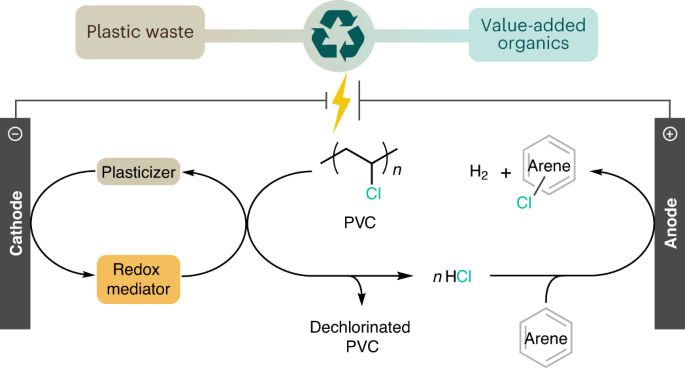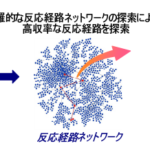2022-11-21 ミシガン大学

Image credit: ILLUSTRATION: NASA, ESA, CSA, Joseph Olmsted (STScI)
また、最新のデータは、惑星を覆う雲が一様ではなく、ばらばらになっている様子を示している。
太陽系外惑星の大気中に、親星からの高エネルギー光によって引き起こされる化学反応によって生成される二酸化硫黄が、太陽系外惑星の大気中で初めて検出されたことは、前例のない発見である。地球では、大気圏上層部にある保護的なオゾン層は、同様の方法で作られる。
研究者たちは、他の星にある高温の巨大惑星の上層大気でも光化学反応が起きていることを初めて証明したのである。
WASP-39 bは、推定温度が華氏1,600度(摂氏900度)で、大気のほとんどが水素でできているため、居住可能とは考えられていない。しかし、今回の研究は、ハビタブルな惑星に生命が存在する可能性を示す証拠を発見する道を示している。
JWSTが検出したその他の大気成分には、ナトリウム、カリウム、水蒸気があり、これまでの宇宙や地上の望遠鏡による観測を裏付けるとともに、これまで見られなかった長波長での水の特徴も発見された。
また、JWSTはより高い解像度で二酸化炭素を観測し、これまでの観測報告よりも2倍のデータを提供した。一方、一酸化炭素は検出されましたが、メタンと硫化水素の明らかな兆候はJWSTのデータには見られません。これは、太陽系外惑星の形成と発展の過程をより深く理解するために、太陽系外惑星の化学組成を調査している研究者にとって重要な発見である。
<関連情報>
- https://news.umich.edu/new-from-jwst-an-exoplanet-atmosphere-as-never-seen-before/
- https://arxiv.org/abs/2211.10488
JWST NIRSpec G395Hによる太陽系外惑星WASP-39bの早期発見科学
Early Release Science of the Exoplanet WASP-39b with JWST NIRSpec G395H
Lili Alderson, Hannah R. Wakeford, Munazza K. Alam, Natasha E. Batalha, Joshua D. Lothringer, Jea Adams Redai, Saugata Barat, Jonathan Brande, Mario Damiano, Tansu Daylan, Néstor Espinoza, Laura Flagg, Jayesh M. Goyal, David Grant, Renyu Hu, Julie Inglis, Elspeth K. H. Lee, Thomas Mikal-Evans, Lakeisha Ramos-Rosado, Pierre-Alexis Roy, Nicole L. Wallack, Natalie M. Batalha, Jacob L. Bean, Björn Benneke, Zachory K. Berta-Thompson, Aarynn L. Carter, Quentin Changeat, Knicole D. Colón, Ian J.M. Crossfield, Jean-Michel Désert, Daniel Foreman-Mackey, Neale P. Gibson, Laura Kreidberg, Michael R. Line, Mercedes López-Morales, Karan Molaverdikhani, Sarah E. Moran, Giuseppe Morello, Julianne I. Moses, Sagnick Mukherjee, Everett Schlawin, David K. Sing, Kevin B. Stevenson, Jake Taylor, Keshav Aggarwal, Eva-Maria Ahrer, Natalie H. Allen, Joanna K. Barstow, Taylor J. Bell, Jasmina Blecic, Sarah L. Casewell, Katy L. Chubb, Nicolas Crouzet, Patricio E. Cubillos, Leen Decin, Adina D. Feinstein, Joanthan J. Fortney, Joseph Harrington, Kevin Heng, Nicolas Iro, Eliza M.-R. Kempton, James Kirk, Heather A. Knutson, Jessica Krick, Jérémy Leconte, Monika Lendl, Ryan J. MacDonald, Luigi Mancini, Megan Mansfield, Erin M. May, Nathan J. Mayne, Yamila Miguel, Nikolay K. Nikolov, Kazumasa Ohno, Enric Palle, Vivien Parmentier, Dominique J. M. Petit dit de la Roche, Caroline Piaulet, Diana Powell, Benjamin V. Rackham, Seth Redfield, Laura K. Rogers, Zafar Rustamkulov, Xianyu Tan, P. Tremblin, Shang-Min Tsai, Jake D. Turner, Miguel de Val-Borro, Olivia Venot, Luis Welbanks, Peter J. Wheatley, Xi Zhang
Arxiv Submitted on 18 Nov 2022
DOI:https://doi.org/10.48550/arXiv.2211.10488
Measuring the abundances of carbon and oxygen in exoplanet atmospheres is considered a crucial avenue for unlocking the formation and evolution of exoplanetary systems. Access to an exoplanet’s chemical inventory requires high-precision observations, often inferred from individual molecular detections with low-resolution space-based and high-resolution ground-based facilities. Here we report the medium-resolution (R∼600) transmission spectrum of an exoplanet atmosphere between 3-5 μm covering multiple absorption features for the Saturn-mass exoplanet WASP-39b, obtained with JWST NIRSpec G395H. Our observations achieve 1.46x photon precision, providing an average transit depth uncertainty of 221 ppm per spectroscopic bin, and present minimal impacts from systematic effects. We detect significant absorption from CO2 (28.5σ) and H2O (21.5σ), and identify SO2 as the source of absorption at 4.1 μm (4.8σ). Best-fit atmospheric models range between 3 and 10x solar metallicity, with sub-solar to solar C/O ratios. These results, including the detection of SO2, underscore the importance of characterising the chemistry in exoplanet atmospheres, and showcase NIRSpec G395H as an excellent mode for time series observations over this critical wavelength range.



